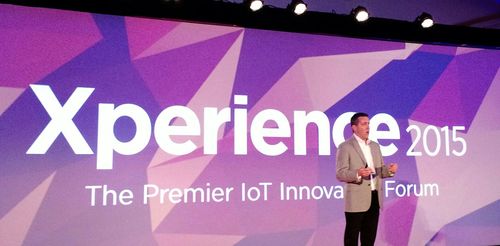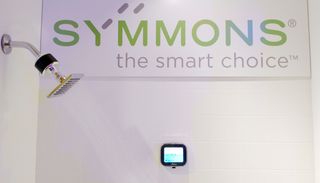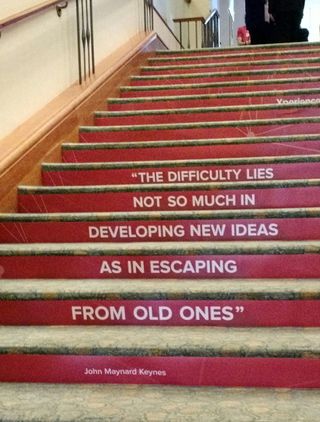IoT & Embedded Technology Blog
Logmein helps grow the IoT pie at Xively Xperience
Cloud service provider LogMeIn hosted its first Xively Xperience conference on October 1-2, 2015 in Boston. As an invitation-only event, it attracted approximately 200 C-level executives and industry experts for keynotes and panel discussions on the current and future state of the IoT. Although the conference included several demos of technology from LogMeIn and it’s IoT cloud service Xively.com, by and large it was devoted to the IoT as a whole, and not merely a sales pitch for LogMeIn/Xively. As such, it was more an early market effort to help grow the whole IoT pie, rather than carve out a bigger slice for the host company.

Keynote speakers included Peter Diamandis, founder of the X Prize Foundation (among his many accomplishments), and renowned inventor Ray Kurzweil (now a Director of Engineering at Google). Speakers and panelists representing a cross-section of Xively customers and ecosystem participants discussed the real-world benefits and risks of implementing IoT.
In a sign of how broadly the IoT can stretch, one panelist was Tim O’Keefe, CEO of the plumbing parts maker Symmons. O’Keefe advised the audience not to try to do everything in the first version of a connected product, but to get customer feedback and iterate. In the demo area of the conference hall, Symmons was demonstrating an Internet-connected shower, in which an electronic device sensor inline with the shower head measured water flow rate and volume, transmitting the data wirelessly to a (waterproof) touchscreen panel in the stall, which then submitted it to a central system.
 The Symmons connected product was intended for hotels to monitor shower usage and detect leaky plumbing. O’Keefe noted that guests are likely to use less water in the shower when they see how much they’re consuming, and hotels could even offer them a share of the money savings. In VDC’s opinion, the Symmons demo exemplifies non-obvious applications of the IoT, and we think that the concept could be expanded even further. A connected touchscreen in hotel bathrooms could be used for additional services, such as a panic button (“Help, I’ve fallen, and I can’t get up”) or for guests to report bathroom issues (buttons for “Fix Running Toilet,” or “Bring More Towels,” etc.).
The Symmons connected product was intended for hotels to monitor shower usage and detect leaky plumbing. O’Keefe noted that guests are likely to use less water in the shower when they see how much they’re consuming, and hotels could even offer them a share of the money savings. In VDC’s opinion, the Symmons demo exemplifies non-obvious applications of the IoT, and we think that the concept could be expanded even further. A connected touchscreen in hotel bathrooms could be used for additional services, such as a panic button (“Help, I’ve fallen, and I can’t get up”) or for guests to report bathroom issues (buttons for “Fix Running Toilet,” or “Bring More Towels,” etc.).
An especially eye-opening presentation came from James Lyne, Director of Technology Strategy for security firm Sophos. Lyne performed live hacks of an Android tablet via Metasploit Meterpreter to view the contents of the tablet’s directories, and via an automated password guessing tool he took control of a consumer-grade webcam. He also showed a video clip (non-live) from a closed circuit TV camera inside a convenience store, in which customers could be seen entering their PINs on a credit card reader. He had been able to access it over the Internet without needing any username or password. In relating such vulnerabilities to the future of the IoT, Lyne gave the audience serious food for thought: “We are about to hand over unprecedented power in the physical world to hackers in the digital world.”
In VDC’s view, such demos exposing poorly protected devices are great for scaring the bejeezus out of observers and motivating product makers not to be that low hanging fruit. But the greater challenge resides at the opposite end of the spectrum, keeping protected the high value devices and systems whose designers have already put considerable time and attention into security in an effort to remain at least one step ahead of the most sophisticated groups of organized hackers.
In the conference’s closing keynote, Ray Kurzweil explored the trends of biological systems becoming information systems, and information systems evolving through wearables and implants on increasingly microscopic levels, to the point that eventually “...the Internet will be directly connected to our brains.” (In light of James Lynes’ demos, that immediately brought to mind the popular question of the Internet era: What could possibly go wrong?)
Overall, the Xively Xperience highlighted many ways in which IoT developments are inspiring (see below) and accelerating change in business and the world at large. We look forward to next year’s edition.

View the 2017 IoT & Embedded Technology Research Outline to learn more.